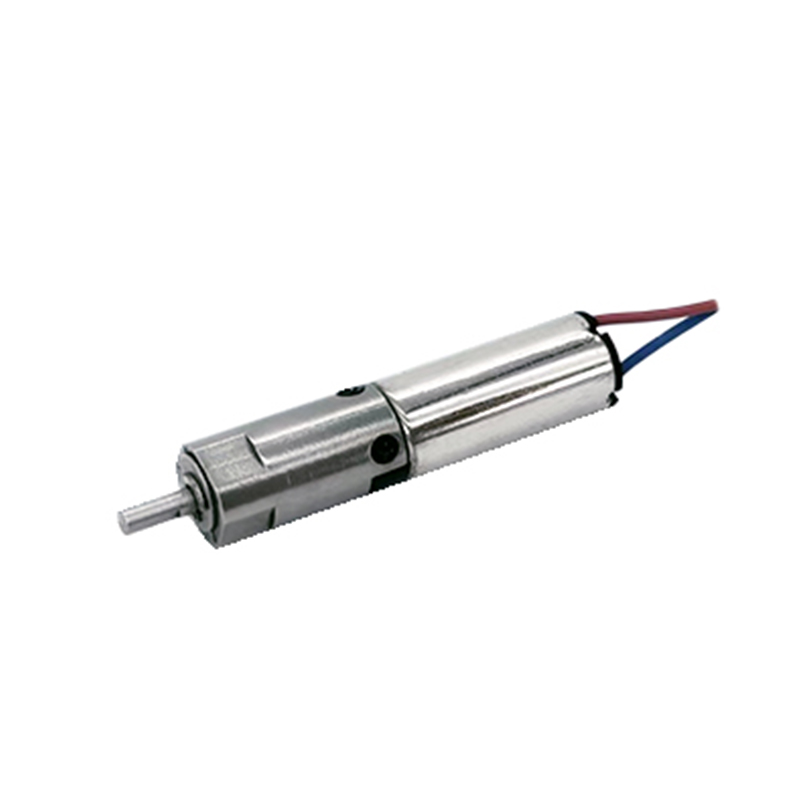In the current era when industrial equipment is accelerating its evolution towards precision and lightweight, the energy efficiency level of motors directly affects the competitiveness of end products. The new generation of hollow cup motors launched by Chaoya has achieved a dual leap in energy consumption and performance in fields such as medical robots, aerospace, and high-end equipment through systematic technological breakthroughs, providing more sustainable power solutions for the industry.
The coreless structure breaks the traditional loss predicament
Traditional motors rely on the magnetic permeability of iron cores, but the heating problem caused by the eddy current effect has long restricted the improvement of energy efficiency. The Chaoya R&D team innovatively adopted a coreless rotor design, directly winding the drive coil onto a high-strength engineering plastic frame. This change shortens the current path by 35% and reduces resistance loss by 48%. Especially in automated production lines that require frequent starts and stops, the annual power consumption of a single device can be reduced by more than 1,200 kilowatt-hours.
The application of rare earth materials has broken through the bottleneck of energy conversion
Through joint efforts with material suppliers, Chaoya optimized the thickness of high-performance neodymium iron boron permanent magnets to 0.8 millimeters, ensuring magnetic performance while reducing the reverse electromotive force. Actual measurements show that under the same volume, the motor output torque is increased by 65%, the energy conversion efficiency reaches 87%, and the energy-saving rate is 25% higher than that of traditional ferrite motors. In the application of portable ultrasound equipment, battery life has been extended by 30%.

Dynamic control algorithms unleash energy-saving potential
In response to the low inertia characteristic of hollow cup motors, Chaoya has developed a dedicated driver chip that integrates a position-current dual closed-loop control algorithm. This technology enables the motor to complete the start-stop switching within 0.1 seconds, which is four times faster than the response speed of traditional motors and completely eliminates the overshoot phenomenon. After being applied to the 3C product assembly equipment, the comprehensive energy consumption of the equipment was reduced by 18%, and the motion accuracy reached ±0.005 millimeters.
The innovation of the heat dissipation system ensures continuous efficiency
Through bionic design, Chaoya transformed the motor housing into a honeycomb-shaped heat dissipation channel, increasing the surface area by 2.3 times. When combined with a nano-scale graphene coating, the heat conduction efficiency is increased by 60%. During the continuous load test, the surface temperature of the motor is 22℃ lower than that of traditional products, ensuring stable output of rated power at an ambient temperature of 60℃ and avoiding efficiency degradation caused by overheat protection.
Multi-scenario verification highlights the value of technology
A comparative test conducted by a well-known international surgical robot manufacturer shows that the positioning error of the robotic arm using Chaoya motors is reduced by 40%, while the system power consumption is decreased by 23%. In the application of unmanned aerial vehicle gimbals, the device's battery life is extended by 21% under the same battery capacity. At present, Chaoya products have obtained 23 international patents and have passed the German TUV energy efficiency grade A++ certification.
Green manufacturing leads industrial upgrading
Chaoya's smart factory, which cost 200 million yuan to build, has been put into operation. Through digital process control, the energy consumption of motor production has been reduced by 32%, and the material utilization rate has been increased to 98.5%. The enterprise has simultaneously launched the "Zero-Carbon Motor" plan, committing to reducing carbon emissions throughout the entire product life cycle by 50% by 2026, providing global customers with a more environmentally friendly power option.